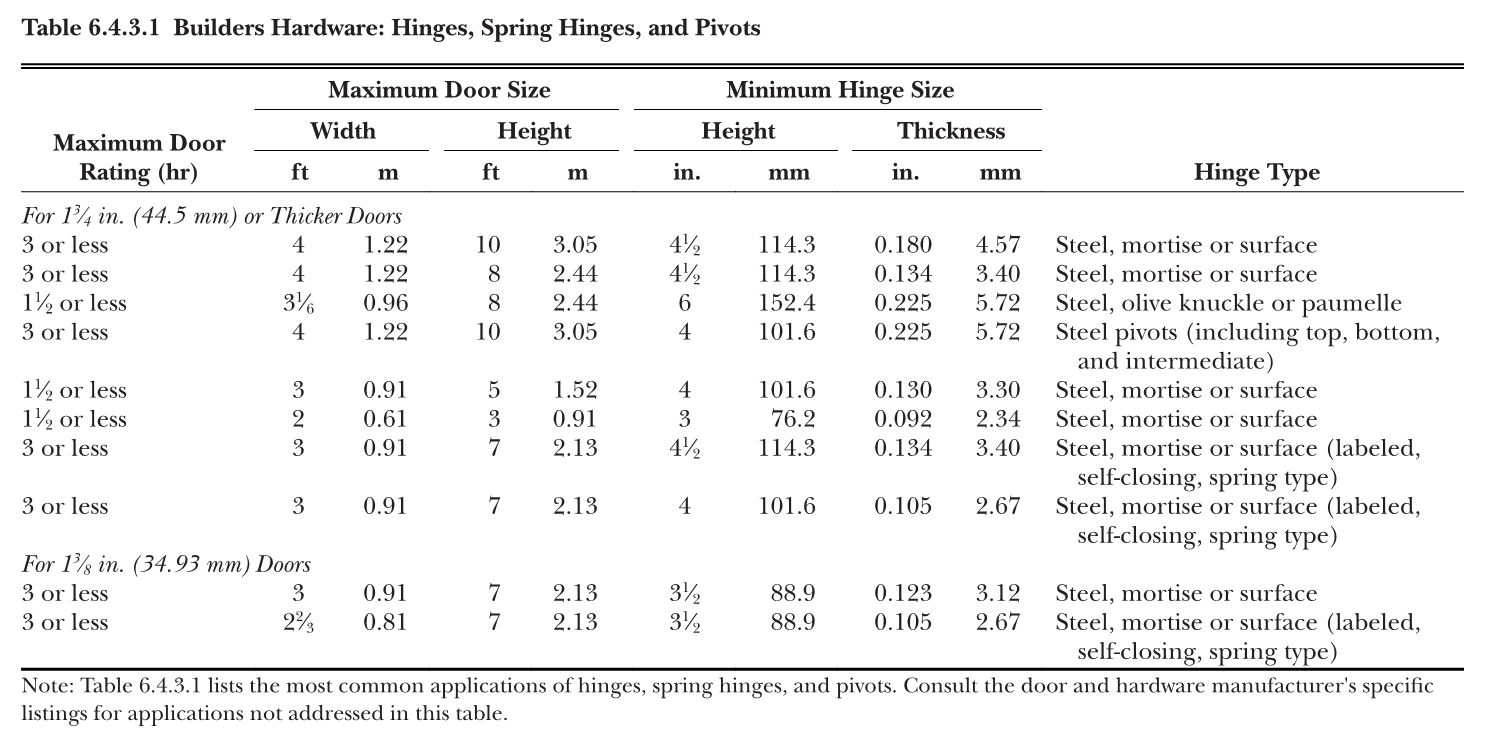Swinging fire doors may be hung on butt hinges, continuous hinges, pivot sets (with or without overhead concealed closers or floor closers), or other methods that have been tested to UL 10C and listed for use on a fire door. The requirements for the common types of hanging devices are found in NFPA 80.
NFPA 80 includes prescriptive requirements for components used to hang fire doors and references several ANSI/BHMA standards that include additional information. There is also an important table in NFPA 80 that includes information about the hinge size, type, and thickness depending on the door size and fire rating. The table may vary from one edition of the standard to the next, but this is the table from the 2019 edition (refer to your copy of NFPA 80 for complete requirements):

In addition to the hinge width, height, and thickness, other requirements covered in NFPA 80 include:
- Quantity of hinges and pivots
- Fasteners used for hanging devices
- Required length of continuous hinges, relative to the door height
- Labeling requirements, and criteria for hinges that do not bear an individual label
- Shimming and adjustment of hinges to correct clearance problems
Read this Decoded article for detailed information about the requirements of NFPA 80. Then proceed to the review questions below.
~~~
Review Questions
1. According to NFPA 80, what is the minimum hinge height and thickness for a 3-hour-rated fire door that is 4 feet wide x 10 feet high x 1 3/4 inches thick?
- 4 1/2 inches high x 0.180 inches thick
- 4 1/2 inches high x 0.134 inches thick
- 5 inches high x 0.225 inches thick
- 4 inches high x 0.180 inches thick
2. How many hinges are required for a fire door that is 118 inches high?
- 3
- 4
- 5
- 6
3. What type of hinge shims can be used to adjust the clearances on a fire door assembly?
- Plastic shims
- Aluminum shims
- Steel shims
- Hinge shims are not allowed on fire doors.
Answers: 1 – A, 2 – B, 3 – C
